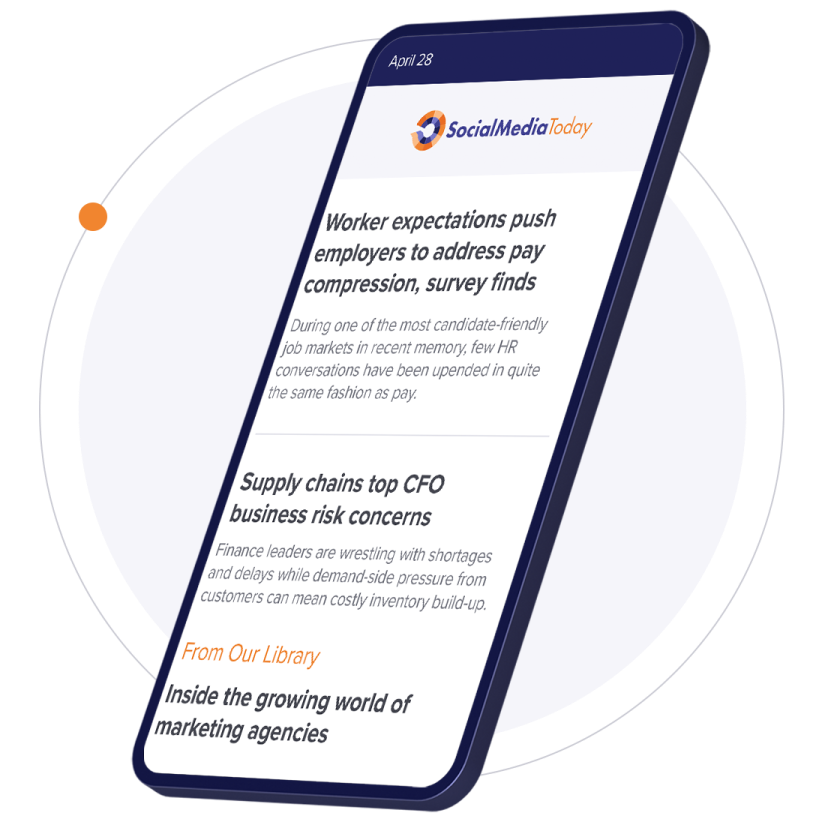Get ready for the next phase of Twitter 2.0’s subscription revenue push, with the platform announcing today that ‘legacy’ blue checkmarks will begin being revoked as of next week.
On April 1st, we will begin winding down our legacy verified program and removing legacy verified checkmarks. To keep your blue checkmark on Twitter, individuals can sign up for Twitter Blue here: https://t.co/gzpCcwOpLp
— Twitter Verified (@verified) March 23, 2023
Organizations can sign up for https://t.co/RlN5BbuGA3…
As per the above tweet, Twitter’s hoping to boost Twitter Blue and Verification for Business subscribers by prompting them to start paying for their blue tick instead.
Twitter’s also alerting blue tick account holders with this in-stream notification.

That could see some legacy verified accounts paying up, bringing in a few more Twitter Blue subscribers - though the amount that are going to revert to Verification for Business, which costs $1,000 per month, will be far less.
But if Twitter wants to reach its target of 50% of its revenue coming from subscriptions, it needs to take action, because right now, according to analysis, Twitter Blue has around 450k subscribers, which equates to only 0.12% of Twitter’s total user base.
In order to generate 50% of Twitter’s total income, Twitter needs around 24 million users to sign up to the program. So while Twitter Blue is set to bring in more money for Elon and Co. (around $11 million per quarter to be exact), it’s nowhere close to being half of the platform’s intake, which, based on its last revenue report, would be around $590 million every three months.
While it also dilutes the value of the thing that it’s aiming to sell. The problem with selling blue checkmarks, both on Twitter and Facebook, is that you’re charging users for the exclusivity, and the perceived reputational value of having a blue tick, but as soon as anyone can buy it, it’s no longer valuable in this respect.
And as more people sign up, it becomes even less valuable over time, and once Twitter removes the legacy blue ticks, that will mean that the only checkmarks left are those that are attached to accounts that are paying for it, which will make it completely worthless in this respect. At that stage, the blue check is only going to show others that you have enough money to afford it, and that you want to support Elon Musk’s mission to change how Twitter works.
Maybe that has some value in itself, and there are some aspects of Twitter Blue that some users will pay for. Though even then, Twitter’s experimenting with a new option that would enable subscribers to not show their blue tick, if they choose – because even Twitter is moving to acknowledge that it’s not the indicator of reputational or exclusivity that it once was.
And it’ll become less so from next week – while it’s also worth noting that even if every legacy checkmark holder were to sign on to pay $8 per month, and keep their blue tick, that would still only be another 420k extra subscribers, max.
And I suspect many won’t. I suspect, too, that removing the legacy checkmarks will have a negative impact, in that it will see some of those users tweet even less, because they won’t feel as aligned to the platform that has taken away that marker from their account.
This is why selling verification ticks is a flawed strategy, because its growth and expansion dilutes its own value, and undermines the concept of what it is. Sure, Meta’s trying the same thing, but even Meta staff raised this same concern (as did Twitter staff), and Meta at least offers a truly valuable aspect, in providing additional, in-person support for paying subscribers.
But even then, Meta’s approach is also flawed, because you can’t sell reputation, you can’t charge for authority or recognition.
Some will think that’s what they’re getting, but eventually, when they’re the only ones left, I think you’ll find that it’ll be much easier to dismiss blue checkmark accounts in-stream.
It’s a confused approach, which won’t become a significant revenue driver – at least not without some significant additions that are worth paying for. But Twitter’s pushing ahead either way.
Prepare to pay up, or lose your blue tick, from next week.







